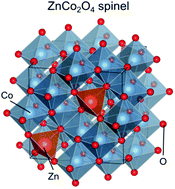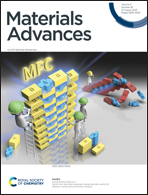P-type cobaltite oxide spinels enable efficient electrocatalytic oxygen evolution reaction†
Abstract
Currently, energy-efficient electrocatalytic oxygen evolution from water involves the use of noble metal oxides. Here, we show that highly p-conducting zinc cobaltite spinel Zn1.2Co1.8O3.5 offers an enhanced electrocatalytic activity for oxygen evolution. We refer to previous studies on sputtered Zn–Co spinels with optimized conductivity for implementation as (p-type) transparent conducting oxides. Based on that, we manufacture off-stoichiometric conducting p-spinel catalytic anodes on tetragonal Ti, Au–Ti and hexagonal Al-doped ZnO carriers and report the evolution of O2 at Tafel slopes between 40.5 and 48 mV dec−1 and at overpotentials between 0.35 and 0.43 V (at 10 mA cm−2). The anodic stability, i.e., 50 h of continuous O2 electrolysis in 1 M KOH, suggests that increasing the conductivity is advantageous for electrolysis, particularly for reducing the ohmic losses and ensuring activity across the entire surface. We conclude by pointing out the merits of improving p-doping in Zn–Co spinels by optimized growth on a tetragonal Ti-carrier and their application as dimension-stable 3d-metal anodes.



 Please wait while we load your content...
Please wait while we load your content...